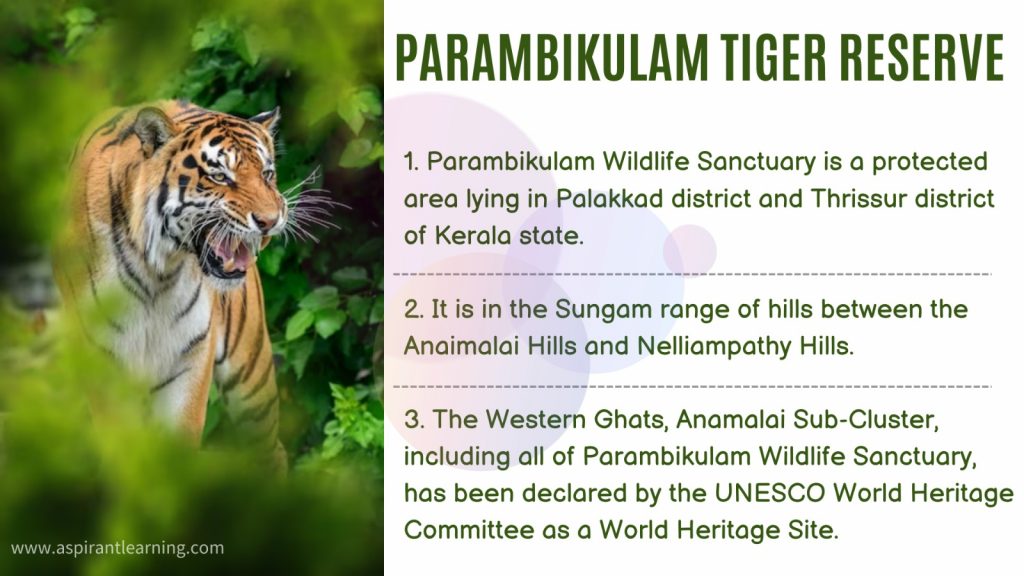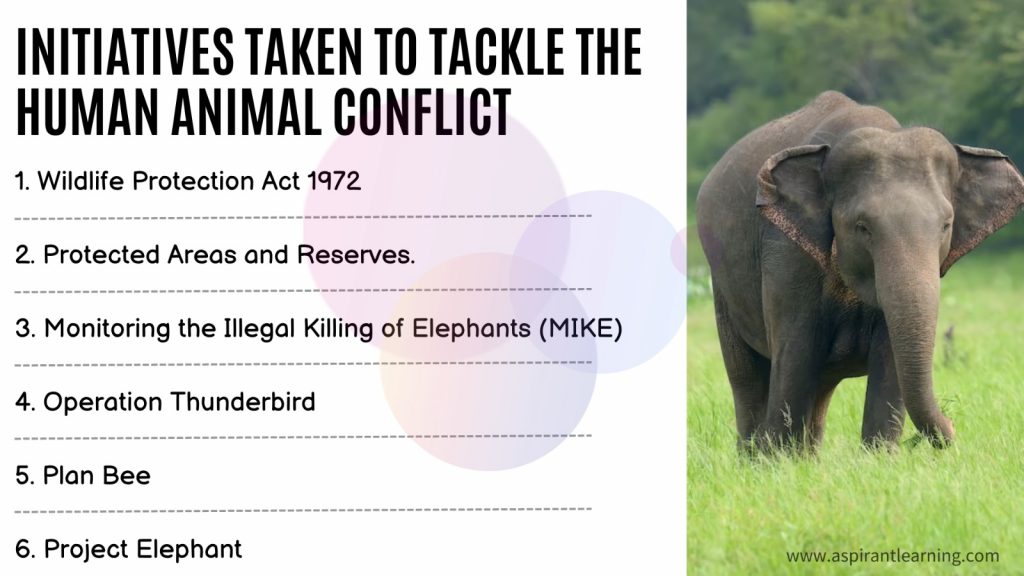News Highlights:
- Recently, the Kerala High Court directed to translocate of the wild tusker known as ‘Arikomban’ from the Munnar-Chinnakanal area in the Idukki district to the Parambikulam Tiger Reserve in the Palakkad district.
- Arikomban is a rogue tusker, infamous for its habit of raiding rice shops and causing destruction in its path.

What is Human-Animal Conflict?
- About:
- Human-wildlife conflict is when encounters between humans and wildlife lead to negative results, such as loss of property, livelihoods, and even life.
- Defensive and retaliatory killing may eventually drive these species to extinction.
- Human-wildlife conflict is defined by the World Wide Fund for Nature (WWF) as “any interaction between humans and wildlife that results in negative impacts of human social, economic or cultural life, on the conservation of wildlife populations, or on the environment.”
- Factors Leading to Human-Wildlife Conflict:
- Habitat loss.
- Growth of the population of wild animals.
- Changing cropping patterns that attract wild animals to farmlands.
- Movement of wild animals from forests area to human-dominated landscapes for food and fodder.
- Movement of human beings to forests for illegal collection of forest produce.
- Habitat degradation due to the growth of invasive alien species, etc.
- Impacts of Human-Animal Conflict:
- Decline and potential eradication of species,
- Financial losses and threats to health and safety, livelihoods, food security, and property.
- Increase in Road and Railways Accidents due to infrastructure development in forested areas.
Steps to Mitigate Human-Wildlife Conflict:
- Translocation of problematic animals:
- Relocating supposed “problem” animals from a site of conflict to a new place is a mitigation technique used in the past.
- Although recent research has shown that this approach can have detrimental impacts on species and is largely ineffective.
- Erection of fences or other barriers:
- Building barriers around cattle bomas (livestock enclosure), creating distinct wildlife corridors.
- Erecting beehive fences around farms to deter elephants has demonstrated the ability to be a successful and cost-effective strategy for mitigating human-wildlife conflict.
- Compensation
- in some cases, governmental systems have been established to offer monetary compensation for losses sustained due to human-wildlife conflict.
- These systems hope to deter the need for retaliatory killings of animals and to incentivise the coexistence of humans and wildlife financially.
- Predator-deterring guard dogs:
- The use of guard dogs to protect livestock from depredation has effectively mitigated human-carnivore conflict around the globe.
- A recent review found that 15.4% of study cases researching human-carnivore conflict used livestock-guarding dogs as a management technique, with animal losses on average 60 times lower than the norm.

Way Forward:
- There is a need for education and awareness among the masses so that they are sensitised about the human-animal conflict; then, mitigation will evolve away from short-term symptom fixes towards long-term sustainable solutions to prevent conflict.
- Ensuring that humans and animals have adequate space to thrive is the basis of human-wildlife conflict resolution.
- Protecting wild lands and natural habitats is key, but so is creating buffer zones between wild and urban areas.
Pic Courtesy: Freepik
Content Source: The Indian Express



